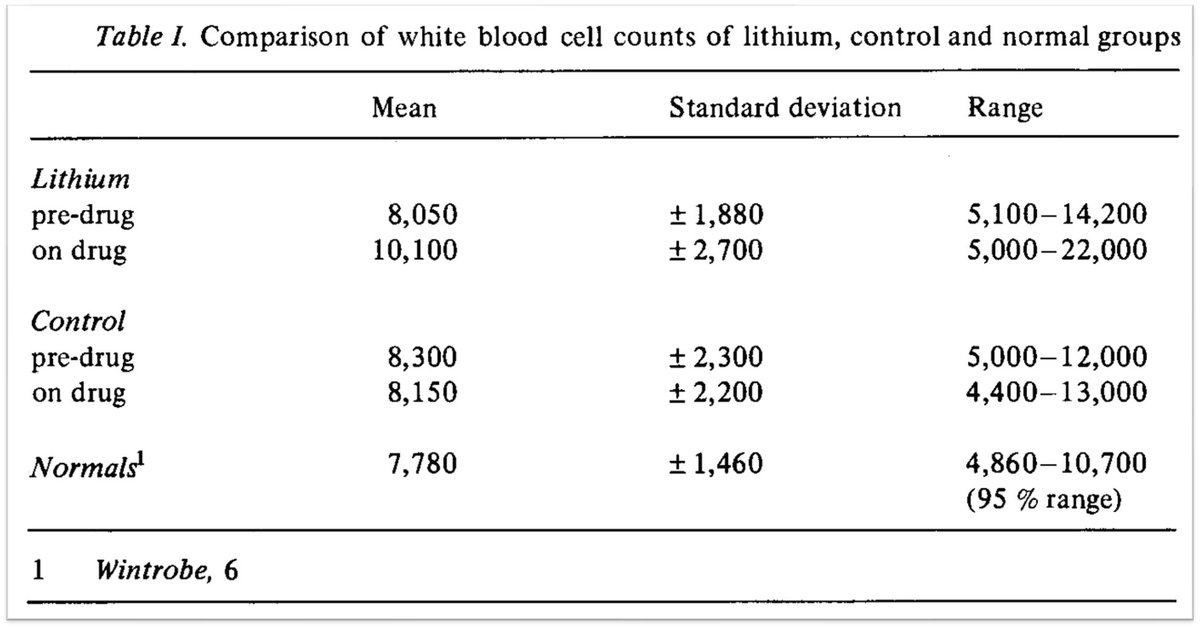1/8 - The Mystery
It's...

Metadata
- Author: @tony_breu on Twitter
- Full Title: 1/8 - The Mystery
It's... - Category: #tweets
- URL: https://twitter.com/tony_breu/status/1636078689233281027
Highlights
- 1/8 - The Mystery
It's 1981, 10 years before filgrastim is approved by the FDA.
You're hoping to mitigate chemotherapy-induced neutropenia in one of your patients.
🤔What medication might provide this ELEMENT of cancer care? (View Tweet) - 2/8 - The Answer
LITHIUM!
💡Soon after its use for bipolar emerged, LEUKOCYTOSIS was observed to be a common side effect.
https://t.co/6FmK7ilhyR (View Tweet) - 3/8 - The Evidence
One 1970 report of 22 patients on lithium noted the following white blood cell counts (WBCs):
☞Pre-drug: 8,050
☞On lithium: 10,100
Other series show that the WBC returns to baseline when lithium is stopped.
https://t.co/0aacYCwVd1
 (View Tweet)
(View Tweet) - 4/8 - The Mechanism
Over the next decade, the mechanism of lithium-induced leukocytosis emerged.
💡First, it became clear that lithium leads to the production of NEW neutrophils, not just redistribution of the marginated pool.
https://t.co/aNTvGtFitN
 (View Tweet)
(View Tweet) - 5/8 - The Mechanism
💡Eventually we learned that lithium promotes neutrophil production by stimulating the synthesis of G-CSF.
https://t.co/816sYTDLvG
 (View Tweet)
(View Tweet) - 6/8 - The Application
Armed with this mechanistic understanding, the late 70s and early 80s saw trials of lithium aimed at mitigating chemotherapy-induced neutropenia.
One RCT found that lithium reduced rates of:
☞Neutropenia
☞Febrile neutropenia
https://t.co/V5mlNIwoAQ
 (View Tweet)
(View Tweet) - 7/8 - The Alternative
Ultimately, filgrastim emerged as a more effective and safer alternative. This was demonstrated in a 1991 RCT showing reductions in neutropenic fever.
That same year the FDA approved its use.
And lithium faded away as an option.
https://t.co/cK9Eljx9sd
 (View Tweet)
(View Tweet) - 8/8 - Postscript
Now when I see a patient with lithium-induced leukocytosis I'll recall this story.
In a few brief years, an observation led to basic science's search for a mechanism and clinical medicine's application of that mechanism to patients.
So cool! (View Tweet)